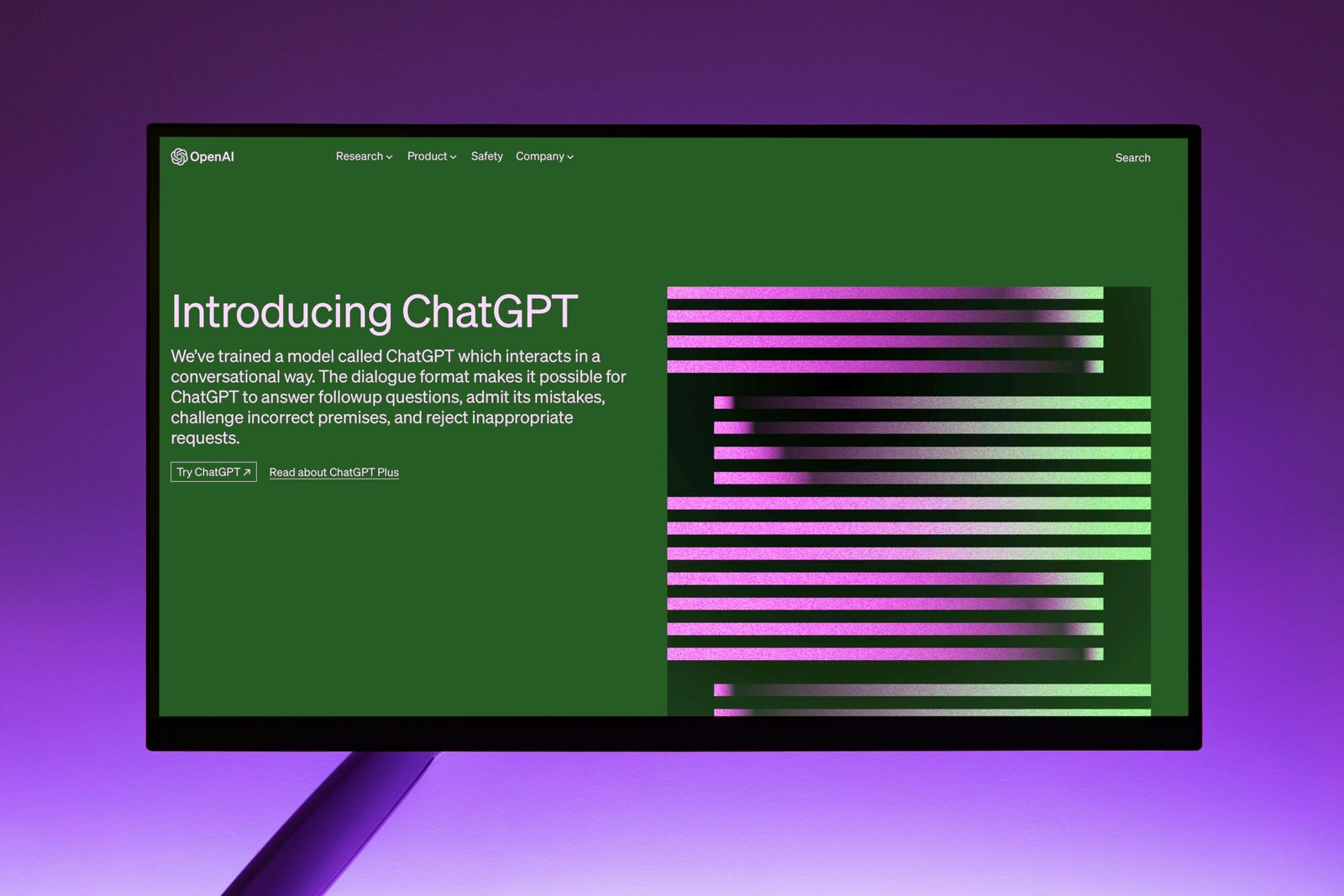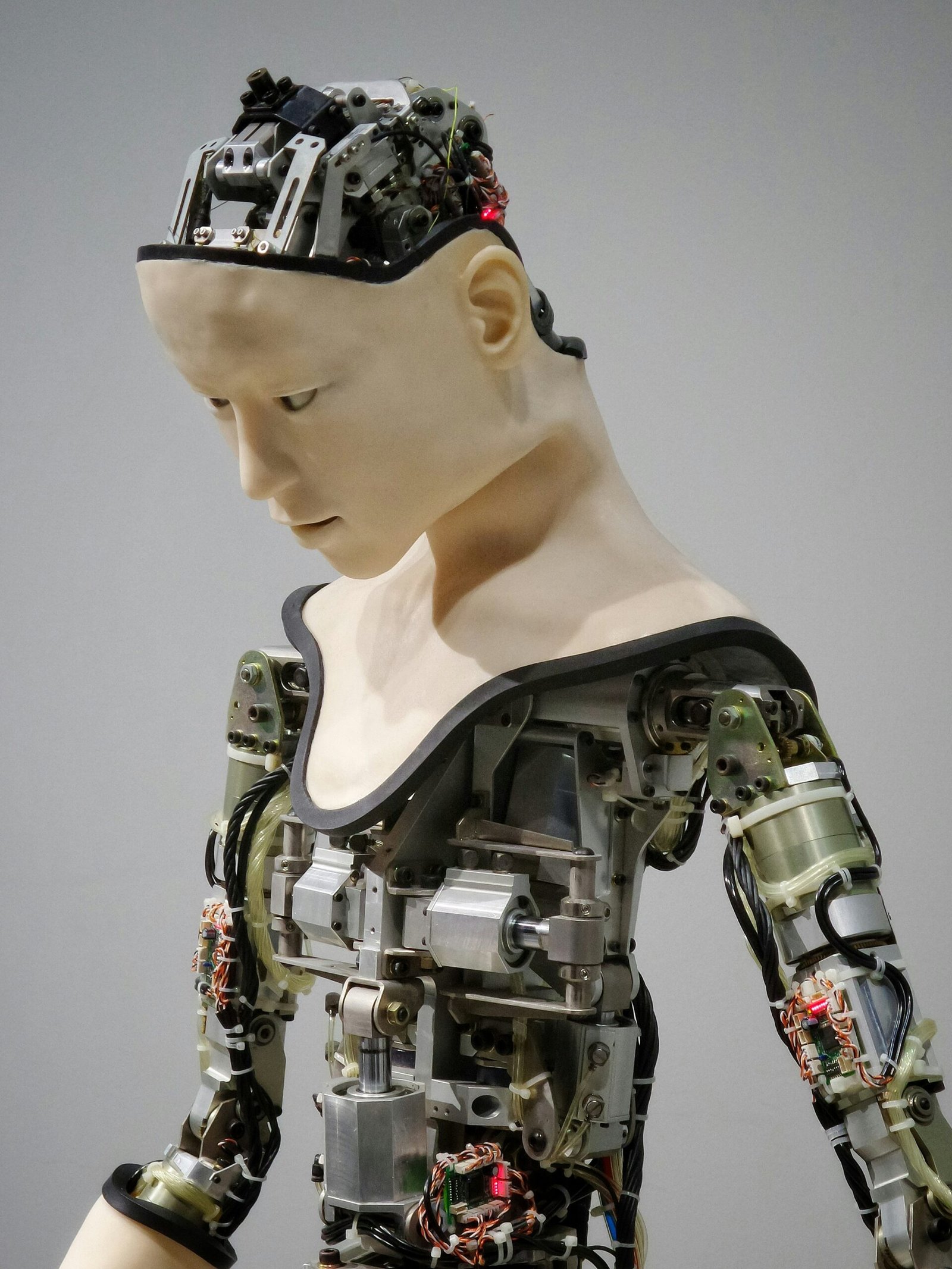OpenAI’s GPT-4: A Significant Leap in Artificial Intelligence

Photo by Andrew Neel on Unsplash
Introduction to GPT-4
OpenAI’s GPT-4 marks a groundbreaking advancement in the field of artificial intelligence. As the latest iteration in the Generative Pre-trained Transformer series, GPT-4 builds upon the foundational capabilities of its predecessors, incorporating enhanced functionalities and greater sophistication. This model is designed to understand and generate human-like text, pushing the boundaries of natural language processing (NLP) and setting new benchmarks for AI performance.
GPT-4’s development signifies a major leap forward, addressing and surpassing limitations observed in previous models. It is engineered with a more extensive architecture and a significantly larger dataset, enabling it to perform a wider array of tasks with remarkable accuracy and coherence. The improvements in GPT-4 are not merely incremental; they represent a substantial evolution that enhances its ability to understand context, nuance, and even subtleties of human language.
The significance of GPT-4 within the AI landscape cannot be overstated. It opens up new possibilities for applications across various industries, from automated customer service to advanced research in linguistics and beyond. By refining its predictive text capabilities and contextual understanding, GPT-4 sets a new standard for what AI can achieve, making it an indispensable tool for developers and researchers alike.
As we delve deeper into the specifics of GPT-4, it becomes clear that this model is not just a continuation but a transformative development in AI technology. Its introduction paves the way for more sophisticated, reliable, and versatile applications, heralding a new era of innovation and efficiency in artificial intelligence. This overview sets the stage for exploring the myriad ways GPT-4 is poised to revolutionize the AI sector and the diverse applications it supports.
Advancements from GPT-3 to GPT-4
OpenAI’s GPT-4 represents a significant evolution from its predecessor, GPT-3, embodying substantial advancements in multiple facets of artificial intelligence. One of the most notable improvements is in natural language understanding. GPT-4 has significantly enhanced its ability to comprehend and generate human-like text, making interactions more fluid and coherent. This leap in natural language processing is attributable to its larger and more diverse training dataset, which has enabled the model to grasp nuances and subtleties in language that GPT-3 often struggled with.
Contextual comprehension is another area where GPT-4 outshines GPT-3. While GPT-3 was already proficient at maintaining context within a conversation, GPT-4 takes it a step further by better understanding and retaining contextual information over longer dialogues. This capability allows GPT-4 to produce more accurate and contextually relevant responses, reducing the chances of tangential or off-topic replies. The improvements in contextual memory also enhance the model’s ability to handle complex queries and follow-up questions, providing a more seamless user experience.
Response accuracy has seen a marked improvement in GPT-4. The newer model demonstrates a higher precision in generating responses, with fewer instances of factual inaccuracies or nonsensical outputs. This is partly due to the enhanced training techniques and algorithms that OpenAI has employed, which focus on refining the model’s ability to generate reliable and accurate information. As a result, GPT-4 is better equipped to assist in tasks that require detailed and precise information, such as academic research or technical writing.
In addition to these core enhancements, GPT-4 introduces several new features and capabilities. Notably, it has improved capabilities in multimodal tasks, allowing it to process and generate not just text, but also images, audio, and other data types. This multimodal functionality opens up new avenues for applications that require integrated data processing, such as advanced virtual assistants and interactive educational tools. Furthermore, GPT-4’s upgraded architecture supports more efficient computation, leading to faster response times and reduced latency, thereby improving overall performance and user satisfaction.
Technical Specifications and Architecture
GPT-4 represents a significant advancement in artificial intelligence, building upon the foundation laid by its predecessors. The architecture of GPT-4 is based on the Transformer model, which has become the standard for many state-of-the-art AI applications. This model features an unprecedented number of parameters, reaching into the hundreds of billions, a substantial increase from GPT-3’s 175 billion parameters. Such an extensive parameter set allows GPT-4 to generate more nuanced and contextually relevant responses, enhancing its overall performance and accuracy.
The training data for GPT-4 is another critical aspect of its technical specifications. The model was trained on a diverse and extensive dataset, encompassing a wide range of topics and linguistic contexts. This dataset includes text from books, websites, and other textual resources, ensuring that GPT-4 can understand and generate human-like text across various subjects. The comprehensive nature of the training data enables GPT-4 to perform remarkably well in numerous applications, from natural language processing to complex problem-solving tasks.
The computational resources required to train GPT-4 are substantial, reflecting the model’s complexity and scale. Training a model of this magnitude necessitates the use of high-performance computing infrastructure, including powerful GPUs and TPUs. The training process involves numerous iterations and fine-tuning steps to optimize the model’s performance. The significant computational investment in GPT-4 is a testament to the ongoing advancements in AI hardware capabilities, enabling the development of increasingly sophisticated models.
In summary, GPT-4’s technical specifications and architecture underscore the rapid progress in the field of artificial intelligence. With its massive parameter count, diverse training data, and substantial computational resources, GPT-4 sets a new benchmark for AI models, offering enhanced capabilities and applications across various domains. The engineering behind GPT-4 highlights the collaborative efforts of researchers, engineers, and computational scientists in pushing the boundaries of what AI can achieve.
Applications and Use Cases
OpenAI’s GPT-4 has demonstrated a significant leap in artificial intelligence, showcasing remarkable versatility across various industries. One of the most prominent applications of GPT-4 is in content creation. The model can generate high-quality text for blogs, articles, and social media posts, greatly reducing the time and effort required for human writers. By understanding context and generating coherent and engaging content, GPT-4 enhances the efficiency of content marketing strategies.
In customer service, GPT-4’s natural language processing capabilities enable the development of sophisticated chatbots and virtual assistants. These AI-driven tools can handle customer inquiries, provide instant support, and resolve issues, thereby improving customer satisfaction and reducing operational costs. Businesses can leverage GPT-4 to offer 24/7 customer service, ensuring that customers receive timely and accurate responses.
Data analysis is another area where GPT-4 excels. The model can sift through vast amounts of data, identifying patterns and generating insights that would be time-consuming for humans to uncover. This capability is invaluable for industries such as finance, healthcare, and marketing, where data-driven decision-making is crucial. For example, GPT-4 can be used to analyze financial reports, medical records, or market trends, providing actionable insights that drive business growth and innovation.
Real-world examples of GPT-4’s applications are already emerging. In the healthcare sector, GPT-4 is being used to assist in diagnosing diseases by analyzing patient data and suggesting potential treatments. In the legal field, the model can help draft legal documents and provide case law summaries, streamlining the workload for legal professionals. Moreover, in the education sector, GPT-4 aids in creating personalized learning experiences by generating customized educational content based on individual student needs.
The potential future applications of GPT-4 are vast. As the model continues to evolve, it could revolutionize industries by automating complex tasks, enhancing human capabilities, and fostering innovation. From improving business processes to advancing scientific research, GPT-4’s impact on the future of artificial intelligence is poised to be profound.
Ethical Considerations and Challenges
As the capabilities of artificial intelligence continue to expand, the ethical considerations and challenges associated with deploying advanced models like GPT-4 become increasingly critical. One of the most pressing issues is the potential for bias within the AI system. Like its predecessors, GPT-4 may inadvertently perpetuate or even amplify existing societal biases present in the training data. This could result in discriminatory outcomes, adversely affecting marginalized groups and perpetuating stereotypes.
Another significant concern is the spread of misinformation. Given GPT-4’s remarkable ability to generate human-like text, it could be used to create persuasive but false information, contributing to the proliferation of fake news and misleading content. This poses a substantial threat to public discourse and the integrity of information shared across various platforms.
The potential misuse of GPT-4 extends to more nefarious activities, such as the creation of deepfakes, automated phishing schemes, and other forms of cybercrime. The sophisticated nature of the model makes it a powerful tool that, if misused, could have severe repercussions for individuals and organizations alike.
To address these ethical challenges, OpenAI is taking proactive steps to promote responsible AI usage. The organization has implemented rigorous testing protocols to identify and mitigate biases within GPT-4. Additionally, OpenAI is actively researching methods to improve the transparency and explainability of the model’s decisions, which can help users understand and trust the AI’s outputs.
OpenAI also emphasizes the importance of collaboration with external experts in ethics, policy, and law to develop comprehensive guidelines for AI deployment. By fostering an inclusive dialogue and seeking diverse perspectives, OpenAI aims to navigate the ethical landscape responsibly. Furthermore, the organization is committed to ongoing monitoring and refinement of its models, ensuring that they evolve in a manner aligned with societal values and ethical standards.
Comparisons with Other AI Models
In the rapidly evolving field of artificial intelligence, OpenAI’s GPT-4 stands as a notable advancement, distinguishing itself through remarkable enhancements in performance, capabilities, and real-world applications. When compared to other contemporary AI models, GPT-4 demonstrates substantial improvements that set it apart.
Firstly, GPT-4’s performance in natural language processing (NLP) tasks outshines that of its predecessors and competitors. For instance, models like Google’s BERT and T5 have been pivotal in advancing NLP, yet GPT-4 exhibits superior contextual understanding and generation. This is evidenced by its higher scores in benchmarks such as the General Language Understanding Evaluation (GLUE) and the Stanford Question Answering Dataset (SQuAD). The enhancements in GPT-4’s architecture enable it to deliver more coherent and contextually appropriate responses, which is crucial for applications ranging from customer service chatbots to advanced research tools.
Moreover, GPT-4’s capabilities extend beyond mere text generation. Unlike models such as Microsoft’s Turing-NLG, which focus primarily on generating human-like text, GPT-4 integrates more nuanced understanding and generation capabilities across various modalities. This includes recognizing and generating not just text, but also supporting multimodal inputs, which enhances its utility in diverse real-world applications. For example, in healthcare, GPT-4 can assist in synthesizing patient data from both textual reports and imaging, offering a more holistic analysis than text-only models.
Another critical factor is the adaptability of GPT-4 in real-world applications. While models like Facebook’s RoBERTa have shown impressive performance in specific tasks, GPT-4’s flexibility allows it to be employed across a broader range of industries. Its applications span from creative content generation and sophisticated data analysis to enhancing educational tools and improving accessibility technologies. This versatility underscores GPT-4’s prominent position in the competitive AI landscape.
Overall, the comparative analysis highlights that GPT-4 not only surpasses other AI models in performance and capabilities but also offers a wider array of practical applications. This positions it as a leading model in the ongoing advancement of artificial intelligence technologies.
Future Prospects and Developments
As we look ahead, the release of GPT-4 marks a transformative milestone in the field of artificial intelligence, setting the stage for a myriad of future prospects and developments. One of the foremost trends likely to emerge is the refinement and specialization of AI models. This involves tailoring AI systems to excel in specific domains, thereby enhancing their utility and efficiency in real-world applications. Industries such as healthcare, finance, and education stand to benefit significantly from these specialized models, enabling more accurate diagnostics, predictive analytics, and personalized learning experiences.
Research directions in AI are also poised to evolve, with an increasing focus on improving the interpretability and transparency of AI systems. As AI becomes more integrated into critical decision-making processes, understanding how these systems arrive at their conclusions will be paramount. This shift towards explainable AI aims to build trust and reliability, ensuring users can confidently rely on AI-driven insights and recommendations. Additionally, advancements in ethical AI will be crucial, addressing concerns around bias, fairness, and accountability in AI algorithms.
OpenAI’s next steps may involve expanding GPT-4’s capabilities through enhanced multimodal functionalities. Integrating text, image, and possibly even audio processing could create more holistic AI systems capable of complex, cross-disciplinary tasks. This would open up new avenues for innovation, from advanced virtual assistants to more immersive digital experiences. Furthermore, the development of AI that can engage in more nuanced and context-aware conversations could revolutionize human-computer interaction, making it more natural and intuitive.
Moreover, the collaboration between AI researchers and other scientific disciplines is expected to intensify. By leveraging AI’s predictive power and data processing capabilities, breakthroughs in fields such as genomics, climate science, and material engineering could be accelerated. This interdisciplinary approach not only enhances AI’s applicability but also drives progress across a broader spectrum of human knowledge.
In essence, the future of AI post-GPT-4 is brimming with potential. As technology continues to advance, fostering innovation while addressing ethical and practical challenges will be key to harnessing the full promise of artificial intelligence.
Conclusion
OpenAI’s GPT-4 marks a significant milestone in the realm of artificial intelligence. By pushing the boundaries of what AI can achieve, GPT-4 has demonstrated notable advancements in natural language processing, contextual understanding, and human-like interaction. These improvements not only enhance the efficiency and effectiveness of AI-driven applications but also open up new possibilities for their integration into various sectors such as healthcare, education, and customer service.
The evolution from GPT-3 to GPT-4 is indicative of the rapid pace at which AI technology is progressing. This leap underscores the potential for AI to transform industries and improve the quality of human life through more intuitive and responsive AI systems. The broader implications of GPT-4 extend to ethical considerations, the need for robust governance frameworks, and the importance of fostering public trust in AI technologies.
As we reflect on the advancements brought about by GPT-4, it is crucial to remain engaged in discussions surrounding the future of AI. How we navigate the challenges and opportunities presented by such powerful technologies will shape the trajectory of AI development. We encourage readers to share their perspectives and contribute to the ongoing dialogue about the future of AI, ensuring that it evolves in a manner that is beneficial and equitable for all.






